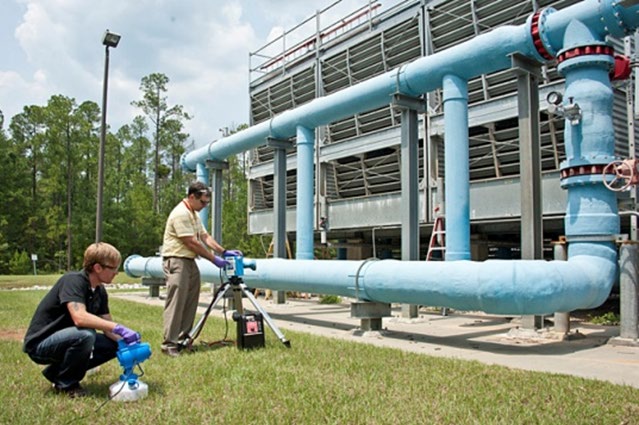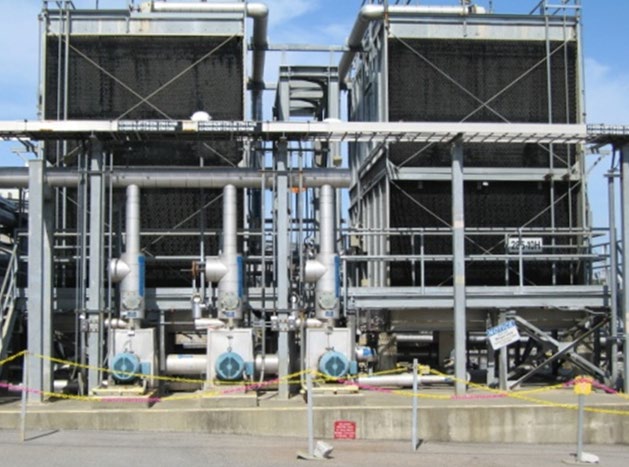Tech Briefs
Savannah River National Laboratory
H₂O Cooling Towers as Environmental Collection Systems
Scientists at the Savannah River National Laboratory (SRNL) are working on new methods for environmental collection and monitoring systems to locate and identify chemical, biological, and radiological agents. The intent of this research is to accomplish air sampling on a scale that surpasses all existing available commercial systems.
Background
Thousands of man-made aquatic systems located in every town and city have the potential to be used as environmental monitors for airborne or waterborne pathogenic or bio-agents that present a potential public health threat. Existing systems such as cooling towers, water fountains, swamp coolers, and waterfalls process thousands of cubic feet of air per minute allowing this process water to be used as a collection medium for environmental monitoring activities. While mainly focused on Weapons of Mass Effect (WME) agents (biological, chemical and radiological), this approach could also be applied to the following: monitoring chemical production plants; nuclear enrichment/reprocessing operations; air pollutants; pollen; or biocontrol agents used for agricultural purposes.

At a glance
- Utilizes existing facilities
- Facilities exist in virtually every town or city
- Monitors for chemical, biological, or radiological agents
- Wide variety of applications and monitoring activities
- Collection capacity far exceeds current monitoring technologies
- U.S. Patent 9,933,407 B2
How it works
Cooling towers are basically heat removal devices used to transfer process waste heat to the atmosphere. Water cooling systems use the evaporation of water to remove heat through counter current mechanisms and cool water to near the wet-bulb air temperature or rely solely on air to cool the water. The towers pick up associated pollens from the environment through air carried by the towers operation. Early tests have demonstrated the ability to detect specific bacteria that have attached to the pollen drawn through the systems intake. Consequently, dispersed microbiological agents (targeted for humans, animals, or plants), chemicals or radiological agents could be picked up in a similar manner. The clear advantage of sampling using existing water tower cooling systems with known specifications is the sampling volume and cooling tower operations make them excellent environmental collectors for potential agents of concern entrapped in the water.

Stage of development
This technology is in early stage research and development with ongoing testing and experimentation underway. Early tests have demonstrated that cooling towers can be exploited as constant running, passive environmental collectors for the monitoring and detection of biological, radionuclide and chemical agents. Research to date has also identified additional methods for improving detection levels. A patent has been filed with the U. S. Patent and Trademark Office.
Partnering Opportunities
SRNL invites interested companies with proven capabilities in this area of expertise to develop commercial applications for this process or product under a cooperative research and development agreement or licensing agreement. Interested companies will be requested to submit a business plan setting forth company qualifications, strategies, activities, and milestones for commercializing this invention. Qualifications should include past experience at bringing similar products to market, reasonable schedule for product launch, sufficient manufacturing capacity, established distribution networks, and evidence of sufficient financial resources for product development and launch.
Download Tech Brief
Contact Information
Savannah River National Laboratory
E-mail: partnerships@srnl.doe.gov